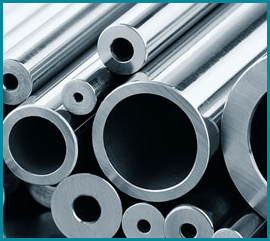views
SS 304/304L/304H Pipes & Tubes: Selection, Usage & Performance
Stainless steel has been the preferred material in industries for ages owing to its superior corrosion resistance, tensile strength, and durability. Of the numerous stainless steel grades that exist today, the 304 family consisting of SS 304, 304L, and 304H is especially noted for its consistency and versatility. These grades are also in high demand when it comes to producing pipes and tubes meant for application in food processing to petrochemicals.
In this comprehensive guide, we’ll take a closer look at SS 304/304L/304H pipes and tubes, explore their differences, typical applications, and factors to consider when selecting the right grade for your needs.
Understanding the 304 Series: Key Differences
Though they all belong to the austenitic family of stainless steels and contain similar chemical compositions, SS 304, 304L, and 304H have subtle differences that make them suitable for different environments and uses.

1. SS 304
Composition: Has about 18% chromium and 8% nickel.
Strengths: All-purpose stainless steel with high corrosion resistance, weldability, and formability.
Typical Use: Suits environments where moderate corrosion resistance is needed, such as kitchen equipment, piping systems, and architectural uses.
2. SS 304L (Low Carbon)
Composition: Same as 304 but with reduced carbon content (max 0.03%).
Strengths: Lower risk of carbide precipitation during welding, making it ideal for heavy weldments and corrosive environments.
Typical Use: Widely employed in chemical and pharmaceutical processing facilities, particularly where welding is to be done.
3. SS 304H (High Carbon)
Composition: Increased carbon content (0.04–0.10%) compared with ordinary 304.
Strengths: Increased strength at higher temperatures through increased carbon.
Typical Use: Extensively employed in high-temperature applications such as boilers, heat exchangers, and pressure vessels.
Applications Across Industries
Due to their outstanding combination of corrosion resistance, strength, and economy, SS 304 series pipes and tubes find application in a variety of industries:
Food & Beverage Industry: Sanitary and clean to clean, ideal for managing food-grade liquids and gases.
Pharmaceuticals: Chemically inert and corrosion-resistant, guaranteeing safe transportation of sensitive products.
Oil & Gas: SS 304H, especially, is appreciated for its high temperature strength in high-temperature conditions.
Construction & Architecture: Strong, weathering-resistant, and durable, stainless steel tubing finds application in railings, cladding, and structural components.
Automotive & Aerospace: Light in weight but strong, they find frequent use in exhaust systems, fuel lines, and aircraft parts.
Selection Criteria: Which Grade to Use?
Selecting between 304, 304L, and 304H boils down to a few important considerations:
Temperature Requirements:
For high-temperature applications, 304H is the preferred choice.
For atmospheric or low temperatures, 304 or 304L might be enough.
Welding Requirements:
When welding is a predominant feature in fabrication, 304L is used due to its intergranular corrosion resistance.
Corrosive Conditions:
Though all three grades provide good corrosion resistance, 304L provides a bit better performance in highly corrosive conditions, particularly after welding.
Strength Needs:
304H offers enhanced mechanical strength and creep properties at elevated temperatures.
Performance & Longevity
SS 304, 304L, and 304H pipes and tubes have an excellent service life, even under harsh conditions. Under proper maintenance and installation, they can withstand decades without appreciable wear, corrosion, or structural degradation.
In addition, their non-reactive surface, smooth finish, and scaling and oxidation resistance render them a prime choice for sectors where precision and hygiene are of utmost importance.
Conclusion
Stainless Steel 304/304L/304H tubes and pipes provide a balance of strength, adaptability, and performance that few materials can rival. Whether you are building a food processing facility, a petrochemical pipeline, or an elevated-temperature heat exchanger, recognizing the subtle variations among these grades can help you make the best selection for maximum performance and lifespan.
When selected wisely and properly applied, the 304 series stainless steel continues to provide value and dependability, showing why it is an industry standard for piping and tubing solutions.






















Comments
0 comment